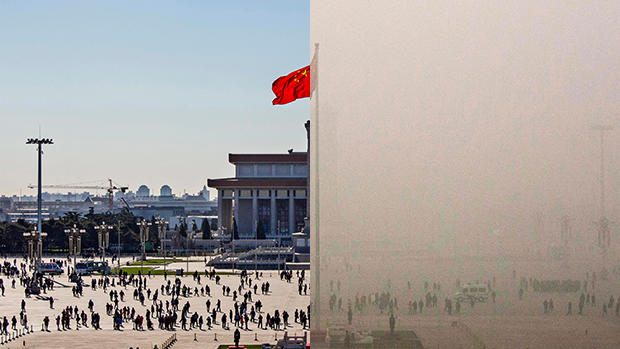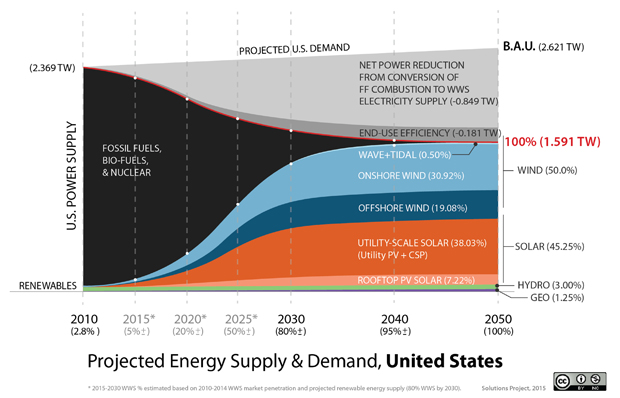Indian Point nuclear plant is troubled, but hard to do without
After a series of safety mishaps at the Indian Point nuclear power plant in Buchanan, New York, and amid fears of a large scale accident like those at Three Mile Island, Chernobyl and Fukushima, environmentalists are calling for the facility to be shut down. The governor agrees. But the plant provides roughly a quarter of the electrical power for New York City and suburban Westchester County. Could it be taken offline without disrupting the current and future energy supply of one of the most populous regions of the country?
Some environmentalists are working on plans to phase out nuclear power, while others believe nuclear remains essential if we hope to keep powering our cities while still reducing greenhouse gas emissions.
A 2012 report prepared by Synapse Energy Economics and commissioned by the environmental groups Riverkeeper and the Natural Resources Defense Council (NRDC) concluded that there exist a range of efficiency measures and renewable energy options that could take the place of Indian Point.
The options include new transmission lines such as the 660MW Hudson Transmission Project, targeted energy efficiency projects, and a slew of renewable energy sources -- including offshore and onshore wind farms and solar photovoltaic panels -- that could be installed by 2022. Until all of the new energy sources are up and running, the report stated that a surplus of energy capacity exists near Indian Point that could carry the state through 2020.
The report estimated that the transition to clean energy would have a small impact on consumer costs, adding about 1 percent to energy bills in 2022. "That's one dollar a month for the average residential customer," the report stated.
"New York has put a lot of effort into thinking and planning for new energy resources to put in place when Indian Point closes," Kit Kennedy, director of the Energy & Transportation Program at NRDC, told CBS News. "Energy efficiency and scaling up solar, wind and offshore -- we could replace Indian Point using clean, renewable options alone."
The state currently has a number of projects in place, including the New York Sun Initiative, which works to expand solar power in the state, and the Energy Highway Initiative, which aims to develop renewable energy sources and upgrade electric and natural gas infrastructure.
New York Gov. Andrew Cuomo, a notable critic of Indian Point, has also adopted plans for New York to run on 50 percent renewable energy by 2030.
"Climate change is one of the defining issues of our time, and we must act now," Cuomo said in a press release last December, as the Paris climate talks were underway. "We are taking real, enforceable actions in New York to lay the foundation for a thriving clean energy economy. With one of the most aggressive renewable energy goals of any state in the nation, we are leading by example to ensure the possibility of a bright future for generations to come."
What are the alternatives?
But not everyone agrees that getting rid of nuclear power is the wisest route.
MIT doctoral candidate Jesse Jenkins, who researches the electric power sector's transition to a zero-carbon system, said that eliminating nuclear power is a step backwards from the goal of eliminating carbon emissions because it would make New York more dependent on dirtier energy from natural gas or other power plants.
"The reality is more air pollution from power plants or methane from natural gas pipelines," he told CBS News. "Air pollution and [environmental] degradation from fossil energy consumption are magnitudes worse than well regulated nuclear power plants."
Jenkins also said that eliminating nuclear power would require spending more money to build up renewable energy sources with no added benefit since nuclear power is already a zero-carbon energy source.
Jenkins noted that countries that are the lowest carbon emitters, such as Sweden and France, rely heavily on nuclear power. Iceland is the only country that produces 100 percent of its electricity from renewable sources and 85 percent of its total energy from renewables. It does this by taking advantage of hydropower and geothermal energy.
Regardless, individuals who want to see Indian Point closed say that the risk of a nuclear facility so close to a major metropolis is too high to ignore.
"You want safe, low-carbon energy for the New York metro area? Don't look for it from Indian Point, which can't keep its transformers from blowing up, its spent fuel pools from leaking radioactivity into groundwater, or its reactor control rods from losing power," Paul Gallay, president of Riverkeeper, a watchdog organization dedicated to protecting the Hudson River, told CBS News.
"If we take the essential step of closing Indian Point, in the wake of the seven accidents and malfunctions it's suffered just since May, the resulting need for natural gas would be minimal and brief. Peak demand forecasts for the New York metro area have declined by more than 500 mW [megawatts] just in the last 18 months, because of the growth of energy efficiency and renewables, both of which would grow at an even faster rate when Indian Point closes."
Transition to renewable energy
Mark Jacobson, a professor of civil and environmental engineering at Stanford University, told CBS News that it is technically and economically feasible for New York, along with the rest of the country, to run on 100 percent renewable energy. In a study published in Energy & Environmental Science, he and colleagues including University of California Berkeley researcher Mark Delucchi outlined what it would take for each of the 50 states to meet their energy needs entirely by wind, water and solar.
Jacobson said that their plan would require a complete overhaul of the energy infrastructure and the way we consume energy. Cars would need to rely on hydrogen fuel cells. Air conditioning, heat and hot water would be delivered via electric heat pumps. Electricity, not gas, would be used for cooking in every home.
"By electrifying all sectors, it will be easier to match power demand at low cost," Jacobson explained.
To develop the plan, researchers first analyzed state-by-state energy use in four sectors: residential, commercial, industrial and transportation. From there they calculated fuel demands and projections through 2050.
Then they looked at the kind of renewable energy that makes the most sense for each state based on environmental factors. In places where the sun shines a lot, solar power was considered the best option; states along the coast were best suited for wind farms; states that had a lot of rivers were ideal for hydroelectric.
An interactive map provides details for each state on the Solutions Project website.
If implemented, the team says their plan would combat climate change, prevent approximately 46,000 premature deaths per year related to air pollution, and create 3.9 million construction jobs and 2 million operating jobs. Moreover, the researchers say each person in the U.S. would save about $260 a year on their energy bills by 2050.
With the growth of solar and wind energy and the reduction in fossil fuels and nuclear energy, the authors concluded that overall end-use would decrease by 39 percent, as shown in the graph below.
The researchers project that each state could achieve 80 percent renewable energy by 2030, and a complete transition by 2050.
"New York and California have adopted 62 percent of our 2030 goals," Jacobson told CBS News. "Hillary Clinton and Bernie Sanders have both adopted out 2050 goal as well of 100 percent clean, renewables for the U.S. by 2050."
Renewables not enough?
Not everyone agrees that an all-renewable energy plan is the way to go. A 2014 industry report by global information and analysis firm IHS stresses the importance of having diverse power sources to reduce the risk of price volatility or shortages.
"The critical importance of diversity to stability in power supplies and prices is the 'missing factor' in much discussion on electricity," IHS Energy vice president and the report's author, Lawrence Makovich, said in a press release. "A diversified portfolio of U.S. power supply is fundamental to a properly functioning electricity system. It is the most cost-effective tool available to manage the inherent risk in power production costs. However, the value of that diversity is often taken for granted, which can end up creating major unintended problems. The ever present potential for price fluctuations, unforeseen supply shortages and other changes in market dynamics all make it prudent to not put all of one's eggs in a single basket."
The study noted the importance of having an array of energy supplies to deal with extreme weather fluctuations that can create deliverability challenges and price spikes. For example, during the 2014 polar vortex, oil-fired power generation supplemented the natural gas supply, which was strained by the greater demand to heat homes and businesses in the Northeast.
"Engineering and economic analyses consistently show that there is no single fuel or technology of choice for power generation. Reliably and efficiently supplying consumers with the amounts of electricity that they need when they need it requires a diverse fuel and technology mix," Makovich said.
Armond Cohen, executive director of the Clean Air Task Force, a group that researches low-carbon energy technologies, believes that the U.S. should continue to pursue a transition to renewable energy sources. However, he thinks that it will take a lot longer than Jacobson believes to achieve such ambitious renewable energy goals.
"Today, wind and solar provide about 5 percent of U.S. electricity -- and that's after a decade of intensive effort," he told CBS News in an email. "Just to fill the 19 percent hole, then, we'd need to quadruple our existing wind and solar. This effort would likely take more than a decade at full tilt -- just not to lose ground on carbon. And then we'd still be leaving the remaining 65 percent of the grid that is fossil generation (gas and coal) remaining to be replaced by something that is zero carbon. "
Cohen believes that the best approach is to pursue all of the zero-carbon options available including renewables, nuclear and carbon capture from fossil energy.
"To decarbonize the economy, we need a mixture of things," Cohen told CBS News. "Renewables, wind and solar have great potential, but if we throw away nuclear, we're tying our hands behind our backs."
Cohen also questioned how a total transition to current wind, water and solar power technologies would be able to provide enough standby electricity to cover times when the sun isn't shining or the wind isn't blowing.
In a 2015 study in the Proceedings of the National Academy of Sciences, Jacobson and his co-authors proposed creative ways to stockpile electricity from renewable resources, such as storing summer heat gathered from solar panels in soil or rocks to use to heat homes in the winter. Excess electricity could be used to create ice to cool buildings and homes when the price of electricity is high. Excess electricity could also be used to create hydrogen, which could be stored in fuel cells or used to power vehicles.
Jacobson points to the Drake Landing Solar Community in Alberta, Canada, for evidence that such storage plans can work. The 52 homes in the community are heated in the winter with solar energy that is stored underground during the summer. Water heated by the sun is kept underground in insulated tubing and the stored warmth heats the community throughout the winter months.
"Most people aren't aware of the plans or possibility," Jacobson said. "Information is the biggest barrier, followed by political opposition by some people and lobbying by companies for the status quo."
He continued: "Scientists have a responsibility to inform the public at large about results of their work and how best to interpret and implement them. The goal has always been to solve large-scale climate, air pollution, and energy security issues. Hopefully these studies will help."

